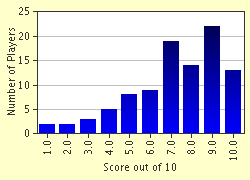Quiz Answer Key and Fun Facts
1. In 1859, the Comstock Lode drew thousands of miners to western Nevada. What was the 'big bonanza'?
2. In 1859, Colonel Edwin L. Drake figured out how to ecomonically extract this substance in Titusville, Pennsylvania. What was it?
3. South Africa is known for producing this. It was the home of the richest mines until the biggest mine for this opened in a neighboring country in 1978. Which of these is it?
4. Where was the largest silver nugget discovered? (Hint: it is no longer in the country it was discovered.)
5. This region, in the British Isles, was world famous for its coal mining industry. (hint: 'How Green Was My Valley')
6. Aluminum (or Aluminium) has a facinating history. It was, at one time, worth more than gold because of the difficulty of refining it. What is a major ore of aluminum?
7. This opaque mineral is highly prized for jewelry. It is commonly used by the Indians of Colorado, Arizona, Nevada and New Mexico for ornaments, inlays and carvings. What is it?
8. In the late 17th century, the Spanish Conquistadors discovered this metal while panning for gold in the Choco region of modern Columbia. They considered it worthless and a nuisance because it hindered their gold mining efforts. Today it is worth more than gold. What is it?
9. This mineral is one of the most important in history. It is commonly found in homes. The chemical name for it is sodium chloride. What is it?
10. In 1848 gold was discovered at Sutter's Mill on the American River in Coloma, California. This spurred the famous gold rush of 1849. Who is credited with the discovery?
Source: Author
prof_electro
This quiz was reviewed by FunTrivia editor
bloomsby before going online.
Any errors found in FunTrivia content are routinely corrected through our feedback system.

